ACP-based social computing and parallel intelligence:Societies 5.0 and beyond
Xiao Wang,Lingxi Li,Yong Yuan,Peijun Ye,Fei-Yue Wang,*
aThe State Key Laboratory of Management and Control for Complex Systems,Institute of Automation,Chinese Academy of Sciences,Beijing 100190,China
bQingdao Academy of Intelligent Industries,Qingdao 266100,China
cDepartment of Electrical and Computer Engineering,Purdue School of Engineering and Technology,Indiana University-Purdue University Indianapolis, Indianapolis,IN 46202,USA
ACP-based social computing and parallel intelligence:Societies 5.0 and beyond
Xiao Wanga,b,Lingxi Lib,c,Yong Yuana,b,Peijun Yea,b,Fei-Yue Wanga,b,*
aThe State Key Laboratory of Management and Control for Complex Systems,Institute of Automation,Chinese Academy of Sciences,Beijing 100190,China
bQingdao Academy of Intelligent Industries,Qingdao 266100,China
cDepartment of Electrical and Computer Engineering,Purdue School of Engineering and Technology,Indiana University-Purdue University Indianapolis, Indianapolis,IN 46202,USA
Social computing,as the technical foundation of future computational smart societies,has the potential to improve the effectiveness of opensource big data usage,systematically integrate a variety of elements including time,human,resources,scenarios,and organizations in the current cyber-physical-social world,and establish a novel social structure with fair information,equal rights,and a flat configuration.Meanwhile, considering the big modeling gap between the model world and the physical world,the concept of parallel intelligence is introduced.With the help of software-defined everything,parallel intelligence bridges the big modeling gap by means of constructing artificial systems where computational experiments can be implemented to verify social policies,economic strategies,and even military operations.Artificial systems play the role of“social laboratories”in which decisions are computed before they are executed in our physical society.Afterwards,decisions with the expected outputs are executed in parallelin both the artificialand physical systems to interactively sense,compute,evaluate and adjust system behaviors in real-time,leading system behaviors in the physical system converging to those proven to be optimal in the artificial ones. Thus,the smart guidance and management for our society can be achieved.
Social computing;Societies 5.0;Parallel intelligence;Knowledge automation;Cyber-physical-social system;Artificial societies;Computational experiments;Parallel execution
1.Introduction
In“Engineering Cybernetics”[1],Hsue-shen Tsien opened the book with a brief statement in the first line of his preface:“The celebrated physicist and mathematician A.M.Amp‵ere coined the word cybern′etique to mean the science of civil government(Part II of“Essai sur la philosophic des sciences”1845,Paris).”[2]According to Amp‵ere,the essence ofCybernetics,which is euphemistically expressed,is about“Civil Government”;or to put it bluntly,is about“societal management and control”.However,60 years ago,due to the lack of data on societal and civil management,Hsue-shen Tsien made the sigh of“Amp‵ere's grandiose scheme of political sciences has not,and perhaps never will,come to fruition.”[1]At that moment,the development of application oriented industrial engineering,especially the application of sensor technology in industrial production,has made it possible to transmit and provide massive real-time physical data and signals in industrial production processes.This is exactly the reason for Hsue-shen Tsien putting“Engineering”before“Cybernetics”,the originalmeaning of Cybernetics was societal or bio-oriented communication and control.
Recently,the China Internet Network Information Center has released its latest report(CNNIC 38)[3]in July 2016.It shows the number of Chinese network users has reached 710 million,while the number of Chinese mobile network users is about 656 million.It's almost half the population of China. Considering the situation in a global view,Statista.com[4] presents that the current Internet user figures suggesting there are more than 2.5 billion users worldwide.Itspecifies the most popular social network sites,indicating that Facebook has 1712 million of active users in the third quarter of 2016, which means one quarter of the world's population gathering on one online platform and indicates one message can be delivered to millions of people in a few minutes.The human communication mode and the information diffusion pattern have been greatly changed.Everyone has the opportunity and ability to make one person,problem,or event well-known overnight.This makes it possible for the first time for researchers to study human dynamics in a global and systematical perspective.Our living space features the virtual cyber world as well,being expanded into the complex space and thus doubled its size[5].Thus,we can't help but doubt,is it possible for“Amp‵ere's grandiose scheme ofpoliticalsciences”to“come to fruition”now?
Nowadays,humans have been enabled to be the most agile social sensors with the development of new devices and modern ICTs,which provide abundant data(both online and offline)on time,space,and interaction,add and address the presence of humans and social dimensions in the old cyberphysical systems(CPS).In that case,network becomes the fundamental infrastructure of our society in the cyber space dimensions,where ICTobtains its new meaning as Intelligence and Connection Technology(referred to as the new ICT)[6]. New types of machines where humans are an integral part emerge,and new requirements are put forward for us to think about problems in complex systems in the cyber-physicalsocial system(CPSS)[7-9]way.Taking human-in-the-loop systems into account for societal management and control, and developing concepts and applications of new ICTs become the necessary conditions to construct smart societies for realizing“Amp‵ere's grandiose scheme of political sciences”.
Many existed studies have explored the data-driven methods for managing societal and public affairs.Shuigen Hu et al.[10]discussed the big-data-based smart public decision-making models applied for maximizing public interests,and proposed four basic elements of decision-making. Reference[11]presented the intention of Tencent to use big data for better serving the entire society.Discussions in paper [12]described the key functionalities of big data in constructing smart cities.
Some other studies emphasized the big data based societal management and control considering human-in-the-loop.For systems full of human's social behaviors,the propositions that need to be proved,are in reality the proposition be influenced, changed,and realized by human's social behaviors[7].Thus, Fei-Yue Wang pointed out in reference[9]that our societal system is transforming from CPS to CPSS,in which Merton's self-fulfilling prophecy laws dominate the behavioral dynamics by using all kinds of social signals[5].He also brought forward the term and related theory of cyber movement organizations (CMOs)[13]in order to study the complex dynamics in pursuit of closed-loop societal management and control[14].
However,the transformation of societal systems from CPS to CPSS brings plenty of challenges as shown in Fig.1.On one hand,due to the uncertainty,diversity,and complexity (referred to as UDC)of human behaviors,human-in-the-loop systems bring new problems for system modeling;on the other hand,the immense big data introduces both opportunities for the government to promote timely societal management and public services,and difficulties to discover the targeted information rapidly and accurately.Besides,Newton's laws that directly control CPS behaviors cannot be applied to CPSS,where system behaviors can only be indirectly guided. Furthermore,intrinsic mechanisms of CMOs need to be explored to understand the formation of human collective behaviors[15,16].Finally,artificial societies considering the combination and distribution of time,software-defined human, resources,scenarios,and organizations need to be constructed, so that the artificial societies can serve as the“social laboratories”to testify and evaluate the social policies that will be launched to our actual society.
In view of the above issues,the ACP approach,in which“A”stands for“artificial societies”working for building complex models;“C”denotes“computational experiments”aiming at accurate analysis and reliable evaluation;and“P”represents“parallel execution”targeting at innovative decision-making,is introduced by Fei-Yue Wang to tackle the CPSS challenges[17,18].Afterwards,the ACP-based social computing method,which uses big data as input to explore social needs,data-fl owing mechanisms and to build a descriptive,computable,and executable way to transform data,information,and knowledge to intelligence,is presented. Thus,parallel intelligence that applies big-data analytics to discover Merton's laws and bridge the modeling gap between the actual physical society and the virtual artificial societies in CPSS can be realized.Considering the time variation, behavioral uncertainty,scenario diversity,and social complexity characteristics of social systems,multi-agent modeling(MAM)[19-21]for depicting the dynamics of collective social behaviors is recommended to study the intrinsic mechanisms of CMOs,along with the integration of knowledge automation[22]to provide smart services.Based on these,the construction of smart society combing system elements of time,human,resources,scenarios,and organizations is developed.The new ICTs based smart management and control of modern society that is fully oriented to both online platforms and off line communities provide society members with interfaces to participate in public affairs at any time anywhere.This is beneficial to build a societal architecture with shared information and equal rights,as well as realize a fair social structure for innovation,management,and guidance.This will also promote a direct interaction between civilians and the government,encourage people to participatein public affairs,and facilitate a diversified,interactive,and service-oriented social condition.Thus,the implementation of Societies 5.0 after the machine society(Societies 1.0),the electronic society(Societies 2.0),the information society (Societies 3.0)and the network society(Societies 4.0),is essentially the realization of parallel intelligence between the actual physical society and the virtual artificial societies.
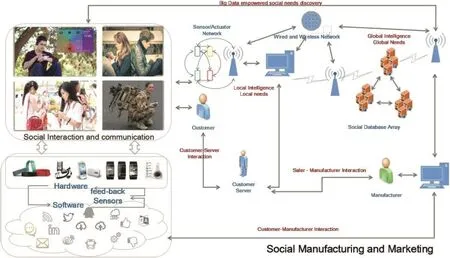
Fig.1.Emerging CPSS challenges-social manufacturing and marketing.
The remainder of this paperis organized as follows.Section 2 describes the major contradictions in CPSS,in line with which the ACP approach for management and control for complex systems is presented in Section 3.Afterwards,the big data based social computing methods for discovering the hidden intelligence and collective behavioral dynamics in cyber space are demonstrated under the guidance of ACP in Section 4.On this basis,we innovatively propose to apply parallel intelligence to bridge the big modeling gap in CPSS,taking human-centered situations into account.Thus,Section 5 introduces new technologies of knowledge automation to provide smart services considering social needs,locations,organizations,etc.,for both online and offline users.Beyond all that,the concept of societies 5.0 is proposed based on the extant studies about social intelligence and parallel communities in Section 6.Towards the end, Section 7 developed the vision for structural and functional characteristics of smart society.
2.Cyber-physical-social spaces and the ACP approach
The pervasive use of portable mobile networked devices introduces human factors into CPS,such as traffic control and safety considering people's travel pattern,energy conservation via social encouragement,advanced automotive system management concerning the driver's control behavior and human limits with the help of vehicle embedded devices,etc.Thus, human-in-the-loop becomes one of the key characteristics of typical complex systems,and human-generated social signals including spatiotemporal behavioral,collective public opinions both in our physicalspace and in the cyber space become the most important resources for societal management and control.Human and socialdimensions mustbe added into CPS and addressed when studying social systems,resulting in a paradigm shift from CPS to the next level of CPSS.In that case,we introduce the ACP approach that combines“artificial societies”,“computational experiments”and“parallel execution”for effectively managing CPSS.
2.1.From CPS to CPSS
The phraseCyber-Physical systems(CPS)[23-25]was coined to stress theintersectionrather than theunionof of the physical and cyber,that is,systems featuring a tight integration between computation,communication,and control in their operation and interactions within the oriented task environment.However,due to the unprecedented sphere and speed of influence experienced in the cyberspace field and its profound impact on the way we behave and interact with each other,the cybespace becomes a real space that parallel to our physical space,expanding our living space into the complex space and doubling its size.The prosperity of mobile Apps andsocial media adds and addresses human and social dimension in CPS,which enabled social and human dynamics the essential factors any effective CPS design and operation,thus uniting the physical and cyber by inserting thesocialfactors into CPS,that is,CPSS,is fully and rightfully justified.
This change also has a philosophical implication that brings CPSS in line with Karl Popper's theory of reality[9,26].The theory states that our universe consists of three interacting worlds:the physical(World One),mental(World Two),and artificial(World Three).Before the Internet,our living space was limited to the physical,featuring mainly the physical and mental worlds.Today,with the presence of the Internet, Internet of Things(IoT),Cloud Computing,big data,our living space features the artificial world as well.At the same time,due to the development of network and information technologies,the cyberspace is becoming seamlessly connected with the physical space,making the artificial world from philosophical abstraction to everyday applications.
The rise of CPSS has led to explosive growth of data sizes, fast movement of data fl ow,high complexity of data models, and significant impact of hidden information in data.This brings both new challenges and opportunities for management and control for a society-oriented system by means of open sourced big data and pervasive usage of mobile intelligent devices,and enables us to explore the World 3.World 1 is exploited atthe surface levelby using the“old”ITs(Industrial Technologies);with the help of the“past”ITs(Information Technologies),human's imagination and creativity are greatly stimulated,and the underground,surface,and space resources in Worlds 1 and 2 are fully developed;now the human society is entering the era of the“new”ITs(Intelligent Technologies) which represented mainly by AI,VR and robotics.Data and knowledge in cyberspace become the most important new resources.The cyberspace,which is firstly proposed by air force engineers in the 1970s,and was defined as“a separate, virtual,computer generated space distinct from real physical space”[27],combines with our physical world to form a complete space.In that situation,how to make the best use of theNew ITsto innovate the management and service of our society,becomes a critical issue related to national prosperity and social stability.The application of new IT into CPSS is illustrated in Fig.2.
2.2.ACP-based management and control for complex systems
Data becomes the most important resource in cyberspace. Using the big data as input,software-defined objects(SDOs), software-defined processes(SDPs),software-defined systems (SDSs),and even software-defined humans(SDHs)in parallel with physical objects,processes,systems,and humans-can be designed and constructed through learning,based mainly on existing data,knowledge,experience,or even intuition [28].With software-defined everything,artificial society can be constructed,in which computational experiments can be conducted(i.e.,self-play,self-run,self-operation,self-evaluation)to testify and validate the soundness of societal management policies or economic strategies,thus a huge amount of“artificial data”can be generated.Those data can then be used for reinforcementlearning to enhance system intelligence and decision-making capabilities.Meanwhile,system decisions are evaluated againstvarious conditions,scenarios,and situations.In the end,the physical objects,processes,and systems interact with the SDOs,SDPs,and SDSs,forming a closed-loop feedback decision-making process to control and manage the complex physical situations(as shown in Fig.3). This is the core concept of the ACP-based parallel intelligent systems[29,30].
The basic idea of ACP-based management and control for complex system[31,32]is:1)Using artificial systems to model complex social units,processes,and systems;2)Utilizing computational experiments to explore the systems' inner logic,analyze and evaluate complex social scenarios;and 3) Relying on parallel execution to guide and manage complex societies.Through the software-defined artificial societies to perform experiments and computation on existing or future events,the ACP approach provides reliable support for management and control of actual societal situations.
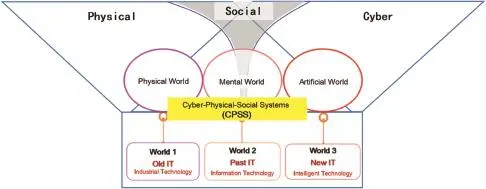
Fig.2.CPSS and Popper's three worlds.
For complex system modeling,some studies focused on designing the digital twins of real physical objects,processes, and systems[33-35]to deal with system conditions that cannot be foreseen.Eric J.Tuegel et al.[33]illustrated the concept using the example of the United States Air Force's new model of aircraft 25-0001.“Along with the physical aircraft,the USAF also receives an as-built digital model ofthis particular aircraft,designated 25-0001D/I.”The“Digital Twin”is“ultra-realistic in geometric detail,including manufacturing anomalies,and in material detail,including the statistical microstructure level,specific to this aircraft tail number.”Actually,the essence of“Digital Twins”lies in using computational leverages to identify and quantify the limited states of system behaviors[34-36].Compared with physical experiments,the cost of failure of computational experiments in software-defined processes and systems is minimal, encouraging creative thinking and inspiring exploration.Thus, the main differences between ACP-based parallel system methods proposed in 2004[36]and“digital twins”can be clarified as“digital twins”emphasizing the importance of simulation of digital models to physical systems;while ACP-based parallel system methods pay more attention to the feedback loop between the physical systems and the artificial systems,in which the advantages of computational experiments are fully developed and system behaviors in the physical one are driven to converge to system behaviors in the artificial one.

Fig.3.CPSS-based parallel execution for the management and control of complex systems.
In this framework,parallel management and control can be used in three operation modes,i.e.,1)Learning and training, the ACP approach is used for establishing the virtual artificial system.In this mode,the artificial system mainly concerns system functions and behaviors,and might be very different from the realphysical system with not much interactions.The goal is to converge the artificial system behaviors to those in the physical system's.2)The ACP approach is used for generating and conducting computational experiments for testing and evaluating various system scenarios and solutions. In this mode,the artificial system and the physical system interact with each other to verify the performance of a proposed policy.The goal is to synchronize the parallel systems' behavioral dynamics and performance with real-time system corrections.3)Management and control:parallel execution plays a major role in this operation mode.The virtual artificial system and real physical system interact with and refer between each other in parallel and in real-time.Specifically,the artificial system guides the physical system's behavior to converge to the artificial one,thus achieving management and control of the complex system,as shown in Fig.3.
3.Big data and ACP-based social computing
Two founding fathers and pioneers of modern management sciences had foreseen the significance of data long before the introduction of the concept of Big Data.The first is from W. Edwards Deming:“In God we trust;others must bring data.”The second is from Peter F.Drucker:“The bestway to predict the future is to create it.”To some extent,societal management using big data is to“speak with data”,“predict the future”and“create the future”[9].
Although the emergence of big data enabled us to study human behavioral dynamics in a global and systematical viewpoint,it brings both challenges and opportunities.On the one hand,the large scalability,diversity,and mobility of data bring a rare opportunity for governments to sense and collect multi-source and wide spread public opinions;on the other hand,however,imposing a big challenge on the modeling of the virtual-real interactive complex social system.Although the range,depth,and scale of data have significantly enhanced, the big amount of data acquired are often full of clutter information and weak mutual linkage,and lack of specificity, which lead to useful knowledge buried in noises and often being ignored in data-mining processes.Besides,the complexity of human dynamics and organizational management has been greatly increased because of the online and offline interaction among billions of people all over the world.
For the effective implementation of the idea of using big data to predict,and even create the future,there must exist a descriptive,testable,and executable way to transform data, information,and knowledge to intelligence.Clearly,ACP-based social computing method offers an effective solution along this direction(shown in Fig.4).Essentially,the implementation will be divided into three steps:(1)Descriptive intelligence,where task or decision acquired knowledge,signals,and information for have been sorted and understood;(2) Predictive intelligence,where events that might occur alongwith their consequences have been comprehended;(3)Prescriptive intelligence,where desirable objectives that have been testified via computational leverages are used to guide the reality,thus facilitating their realization.

Fig.4.From Big Data to ACP to DPP.
Social computing is an interdisciplinary research and application field,including both computational and social sciences.To support social interaction and communication,it relies on social network analysis;social text mining;social semantic analysis;human-computer interaction;and sociological,psychological,economic,and anthropologicaltheories [37].Social informatics studies have revealed that technology and society affecteach other.Thus,with the New ICTs,on one hand,social computing emphasizes technology development for society sensing,processing,computing and evaluating;on the other hand,it incorporates social theories and practices into development of New ICTs such as artificial intelligence, machine intelligence,neural network,etc.To facilitate the design of social-technical systems and enhance their performance,social computing must draw nourishment from sociology and anthropology and integrate psychological and organizational theories[38-40].From an information processing perspective,social computing's technological infrastructure encompasses Web,database,multimedia,wireless,agent,and software engineering technologies.
From a methodological viewpoint,incorporating social theories into technology development poses the additional requirement for constructing artificial societies using agent modeling techniques in accordance with specific rules and through the interaction of autonomous agents in a social environment[20].Fig.5 illustrates the structure of multi-agent system(MAS)based social system modeling.In MAM, simulation can be particularly valuable and ethical when examining policies dealing with matters of life and death[41]. In addition,due to the difficulties of testing real systems that are inherently open-sourced,dynamic,complex,and unpredictable,computational experiments with artificial systems and simulation techniques are usually needed for evaluating and validating decisions and strategies.Combining real and simulated data for the purposes of verification and validation can be a major challenge,particularly when real-world data is incomplete or unavailable.To seek effective solutions,artificial and real systems are executed in parallel and employ adaptive control methods for the computational experiments. Finally,social simulations often must be part of a large framework that includes data-and text-mining tools so that real and virtual data can be collected and co-analyzed[42].
ACP-based socialcomputing takes fullconsiderations of the interaction between the physical and cyber society,it helps to develop models concerning basic infrastructures in a social scenario,such as buildings,roads,communities in a bottom-up fashion.Meanwhile,combined with MAM,this approach is able to perform tasks such as population synthesis,scene construction,and design of“social laboratories”,and study the emergence of collective intelligence from the interactions among simple individuals,all based on the statistical characteristics of systems in the physical world;in addition,the approach enables computing and experimenting on macro phenomena such as large scale collective behavior,emergent social processes,and social influence spreading,thus predicting the“butterfly effect”in a socialsystem(e.g.,power failure of a single city might cause panic in civilians,traffic congestion, hindered economic activities,even spread across other cities to cause serious negative impact on society and its economy)and discovering potential social problems in a reasonable and effective fashion.Through construction of the parallel system that offers virtual-real interaction and feedback regulation,the ACP-based social computing provides evidence and supportfor decision-marking in societal system managementand control.
4.Parallel intelligence:from Newton's big laws with small data to Merton's big data with small laws
In societal systems,one important issue is pertaining to the dynamics of a CMO(formed around specific social resources in cyber space)which connects the physical and cyber space together,with consideration on its time and space dependent nature.Meanwhile,the ways of information dissemination, CMOs'evolutionary dynamics,interact mode between humans and their societal environment,modeling and analysis of social culture,etc.,are also needed to be concerned in a societal system.The UDC introduced by human dynamics increases the modeling gap between the model world and the physical world (as shown in Fig.6).Due to this modeling gap,the focus will be shifted from Newton's big laws with small data where system behavior is directly controllable,to Merton's small laws with big data where system behavior is only indirectly affected.
4.1.Newton's systems vs.Merton's systems
The type ofsystems where system behaviors are governed by Newton's Laws are called Newton's systems.Their main characteristics can be described as:whenever given the currentsystem state and the controlequations,the nextsystem state can be obtained theoretically through the operation of system equations,thus the system behaviorcan be accurately computed and predicted(shown in Fig.7(a)).Thus,for Newton's systems, the main task for system modeling is to identify Newton’Laws that control the system's behaviors,and directly design corresponding control methods to achieve the objectives.Modern controltheory is mainly for such Newton's systems.
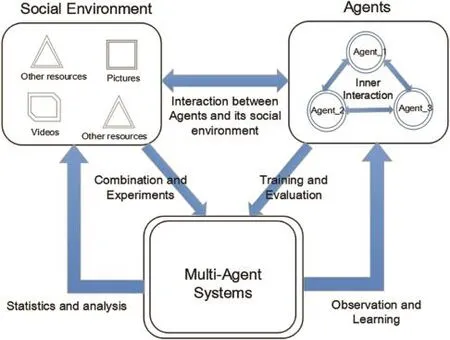
Fig.5.MAS based social system modeling.
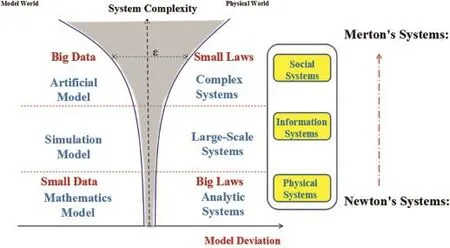
Fig.6.Newton's system vs.Merton's system.
Similarly,the type of systems where system behaviors are guided by Merton's Laws are called Merton's systems.Merton's Laws are named after American sociologist Robert King Merton.In general,they are referred to as Merton's Self-Fulfilling Prophecy Law[43].More specifically,a self-fulfilling prophecy is a prediction that directly or indirectly causes itself to become true,due to feedback between belief and action.The main characteristics of Merton's systems are:although the current system state and control conditions are given,the next system state cannot be accurately computed and system behaviors cannot be accurately predicted(shown in Fig.7(b)).The“free will”in such types of systems result in the uncertainty of systems' behaviors,which cannot be directly controlled in principle,rather,can only be influenced indirectly to promote the appearance of desirable objectives in a probabilistic setting. For Merton's systems,the main task for modeling is to discover and design the Merton's Laws that can effectively guide the systems' behaviors based on desirable objectives.
Societalsystem is a typicaltype of CPSS in which the system behavioral dynamics are guided by Merton's laws.Forproblems related to human's social behaviors,in many cases,the proposition we want to prove,is in reality the proposition weinfl uence,change,and realize.The word-of-mouth effectwould be the best proof of that.It does not follow the cause-and-effect relationship in natural sciences,rather,it follows the cause-andeffect mutual drive relationship in psychology.Simply,a statement could alter actions and therefore come true.
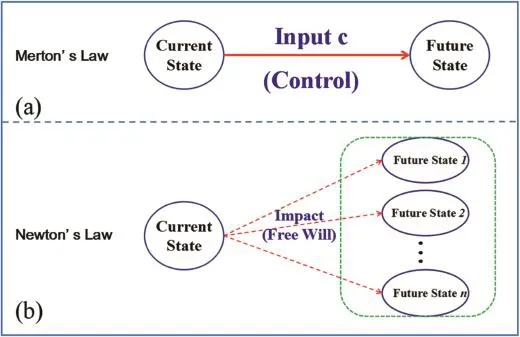
Fig.7.Newton's Law vs.Merton's Law.(a)Newton's system-controlling law:Target implementation with certainty.(b)Merton's self-fulfilling prophecy law:Target implementation with uncertainty.
4.2.Parallel intelligence:bridging the modeling gap in societal systems
The complex characteristics of humans and their social behaviors with high uncertainty,dependent spatio-temporal dynamics,and cyber movement organizational variety,etc., add and address even more new challenges to societal system modeling that cannot be solved by traditional societal management and control methods[44].Thus,on top of the actual societal system,we introduce the ACP-based parallel intelligent systems to construct parallel intelligence to bridge the modeling gap in Fig.6.The main idea is building artificial systems based on MAMto compute,analyze,and discover the underlying appropriate Merton's laws via social computing methods based computationalexperiments,so as to directly or indirectly affectthe agents'free will,guide system's behaviors, and interfere with the future societalstate(as shown in Fig.8). In this way,we facilitate the actual system to be managed and controlled under the pre-defined objectives through virtualreal interaction and parallel execution in the parallel intelligent systems which is depicted in Fig.9.
Fig.9 demonstrates the architecture of parallel control and management for CPSS developed over a decade ago by Wang [30,44].In parallel systems,every physical objects,processes, and sub-systems corresponds to one or more software-defined artificial objects,processes and sub-systems.The construction of SDS is the process of learning,mainly based on existing data,knowledge,experience,and even intuition to reveallaws, rules,models hidden in the cyberspace.With SDS, computational experiments can be conducted,i.e.,self-play, self-operation,self-evaluation,and from the SDS based computational experiments,huge amounts of artificial data are generated[28].The artificial data,combined with real-time physical data,are then used for reinforcement learning to enhance intelligence and decision capabilities,meanwhile,the decisions can be evaluated against with as many as potential social situations.In the end,the physical processes and systems interactwith the software-defined processes and systems, forming a closed-loop feedback decision-making process to control and manage different kinds of complex scenarios.
The astonishing winning of the computer Go program AlphaGo against one of the world's best Go players,Lee Sedol,with the resultof 4:1 in a five game match[45],can be illustrated through a parallel intelligent system perspective. AlphaGo has played more than 30,000,000 games with itself before the historical match with Lee,which is more than the number of games a 100-year old human can play in his entire life.The play-generated big data,in turn,provided the richest resources for the deep learning approaches behind AlphaGo, and improved and optimized AlphaGo's game-playing strategies through self-learning,self-computing,self-evaluating, which are actually parallel to physical Go game-playing processes but with trillions of possible moves and around 10 to the power of 700 possibilities.
To some extent,complexity is intelligence.Pierre Teihadr de Chardin viewed evolution as a process resulted from increasing complexity[46],and with such argument,intelligence is computation with increasing complexity.The ACP approach is perfectly applied to deal with complex situations in human-information-machine hybrid super-complex societal systems.The core philosophy is that,through combing“artificial systems”,“computational experiments”and“parallel execution”,ACP approach can turn the virtual artificial space, i.e.,the“cyberspace”,into another space for modeling andsolving complexity problems.Thus,the virtual artificial space and the real physical space construct a“complex space”.And the most recent development of new IT technologies,such as high-performance and cloud computing,deep learning,and Internet of Things,provide a technical foundation for the ACP approach.In essence,the ACP approach aims to establish the boundary of and construct both the“virtual”and“real”parallel systems of a complex system,afterwards both of them are utilized to solve complex system problems through quantifiable,computable and implementable real-time closed-loop execution and interaction.

Fig.8.ACP-based big data analytics to fill up the modeling gap.

Fig.9.Parallel intelligence for decision-making[28].
5.Software-defined societies:knowledge automation for smart services
One of the most important steps in constructing artificial societies is to define the boundary of a SDO,a SDP or a SDS, within which to encapsulate knowledge(rules including process instructions and routings,models,algorithms,etc.)in terms of specific targets considering the complex social fabric that the SDOs,SDPs or SDSes are embedded in.Just as written procedures,fl ow charts and computer programs provide the required repeatability,composability,and testability in clerical operations,SDOs,SDPs,and SDSes enabled societal managementand control the above features by means of computational experiments.The essential problem is encapsulate knowledge in software-defined things to provide elegant,efficient and easy to operate services.That is the key problem to be solved in software-defined artificial society:applying knowledge automation technologies for providing smart services.
The history of knowledge automation can be traced back to ancient Aristotle's descriptive knowledge and the primitive formal logic,with its trans formative expansion by Boolean at the beginning of the Industrial Revolution.The formal introduction to artificial intelligence about half a century ago,along with the subsequent knowledge representation,expert systems, knowledge engineering,intelligent systems,etc.,constitute the complete historical evolution of the knowledge automation.
Nowadays,as cyber space becomes a real parallel space to our physical space,and data becomes the most important resource,we are dealing with various kinds of objects that are composed predominately or entirely of data.Thus,human development is transforming from the Industrial Age with all kinds of artifacts in the physical world that are full of physical signals to the Knowledge Age with all kinds of artifacts in the cyber world that are full of social signals.Industrial Age needs industrial automation but Knowledge Age requires knowledge automation.The development of the Industrial Age imposed many“presumptuous”requirements on human physical strength,thus forcing people to rely on industrial automation to“compensate”their insufficient strength for the implementation,operation,and maintenance of various types of large or sophisticated systems[47].Facing the rapid rise of CPSS with human-in-the-loop,Knowledge Age also imposes a higher,and even more“presumptuous”requirement on human intelligence.People need the help of knowledge automation to“compensate”their inadequate intelligence,in order to complete various tasks with endless uncertainty,diversity,and complexity.Knowledge automation enabled Industrial Automation and Social Service Automation with the help of new ITs is shown in Fig.10.
Thus,knowledge automation becomes the natural extension and improvement of information automation,the process of human-in-the-loop automation,and the basis of the transformation from automatic control in the physical world to the intelligent management in the artificial world.It considers social activities(or CMOs)in five aspects:time,human,scenarios,resources,and organizations.By means of SDOs,SDPs and SDSes to construct artificial social organizations,communities,and societies,any combination of the above mentioned five aspects can be analyzed,computed,and evaluated through computational experiments.In terms of specific targets,the operations,policies,and decisions with expected outputs will be recorded and parallel executed in both the artificial and the physical systems.Thus,for emergent social events facing similar situations,the previously computed and evaluated SRP,SES and SPM can be repeatedly applied,and the parallel systems' behaviors are interactively sensed, computed,evaluated,and adjusted.Ultimately,the system behaviors in the physical system are drawn to converge to those proven to be optimal in the artificial ones.The knowledge automation supported social services is illustrated in Fig.11.
Location-based services(LBS),task-based services(TBS), information-based services(IBS),knowledge-based services (KBS),and decision-based services(DBS)are the typical forms of knowledge automation.Taking DBS as an example,the data required to make a decision is sometimes in turn the result of one or more other decisions,thus the main task is to sort through the decision interdependencies based on the data they produce and the data they require[48].Thus,DBS provides a basis for both routing data and triggering decision situations. That is,delivering data to all decisions requiring it,and triggering a decision when all required data has been received.
By means of smart services such as LBS,TBS,IBS,KBS and DBS,knowledge automation enabled CPSS to realize active perception,positive response,automated decision making,and real-time feedback execution in our physical society.LBS can be fully aware of the locations in the physical world,online and offline virtual interactions,and social organizational participation of CMOs.TBS and IBS are helpful to analyze and predict the psychological or behavioral model of CMOs,the evolution dynamics of both social and cyber organizations,and the full-cycle smart societal services. DBS and KBS provide scientific management and guidance for free will and the execution of social services.Therefore, ACP-based social computing methods generated parallel intelligence,along with knowledge automation,truly promote the implementation of smart services.
6.Social intelligence:from parallel communities to societies 5.0
6.1.Social intelligence:from CMOs to the mind of society

Fig.10.Knowledge automation enabled industrial automation and service automation.
CMOs seamlessly connect the physical space and cyber space and promote the formation of“complex space”for solving problems emerged in complex systems such as CPSS(as Fig.12 shows).The concept of CMOs is firstly proposed in reference[13],in which itis defined as groups of online users gathered together congregating around specific virtual social resources(VSR)such as topics,photos,videos in a very short time,and implemented social behaviors with a purposive and collective attempt.Generally speaking,the development of CMOs has experienced three stages:social movement organizations(SMOs),cyber-enabled social movement organizations(CeSMOs)and CMOs[49].
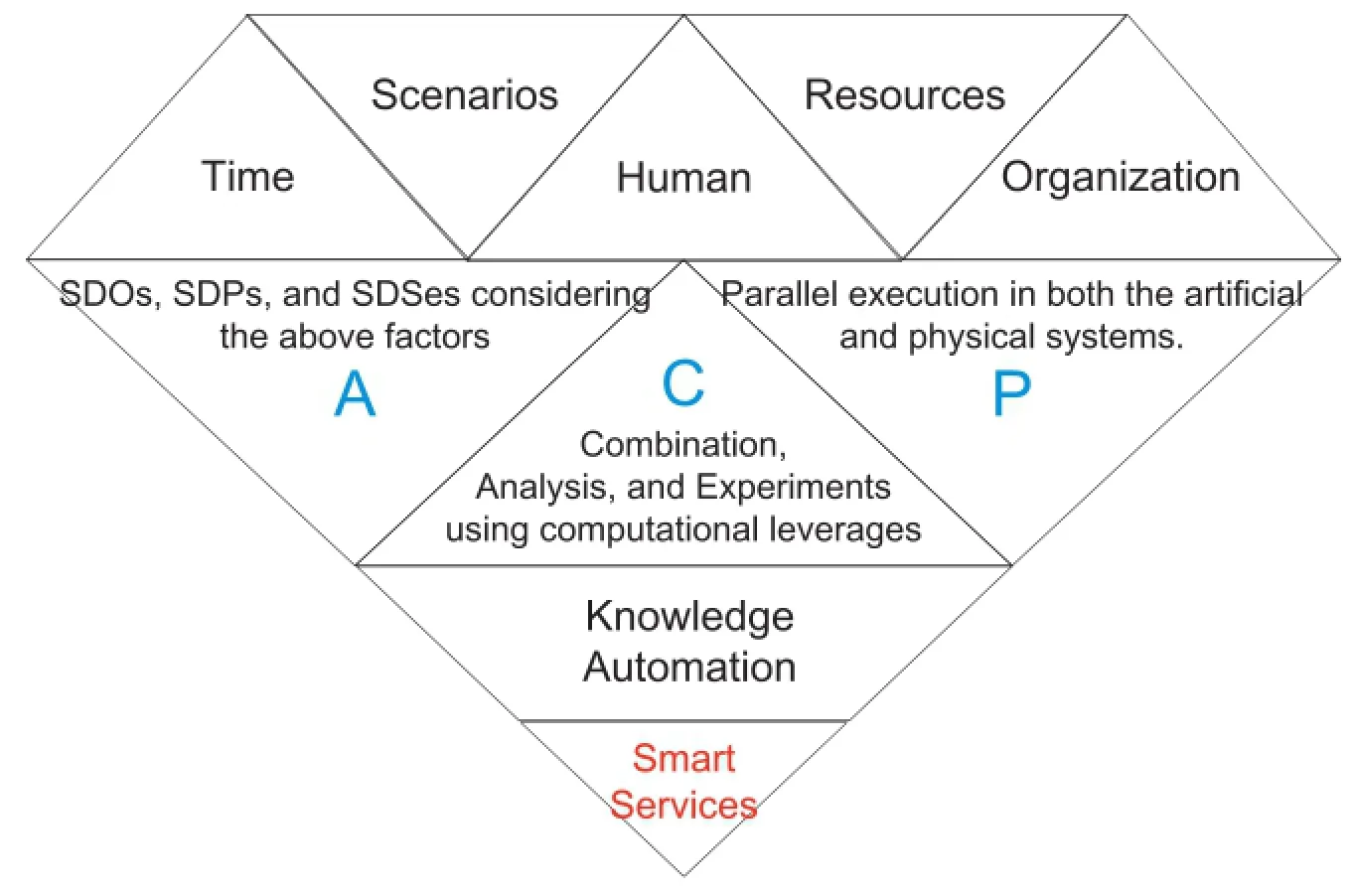
Fig.11.Knowledge automation supported smart services based on ACP approach.
In Zald's foundational article of SMOs published at1966,he defined a social movement as“A purposive and collective attempt of a number of people to change individuals or societal institutions and structures”[50],and discussed the growth, decay and change of SMOs.After more than fifty years of development,the studies on SMOs are now divided into the following four categories[51]:crowds behavior analysis, resource mobilization,political opportunity structure,and framing theory.By the end ofthe 20th century,the spreading and communication modes have been greatly changed with the worldwide network,leading to the transformation of SMOs to CeSMOs.As R.Kelly Garrett pointed in his widely spreading work“Protestin an Information Society:AReview ofLiterature on Social Movements and New ICTs”[52],the Internetplayed three different roles in SMOs:“Internet as resource mobilization structure”,“Internet as political opportunities”,and“Internet as framing tools”.For example,Christopher Mele[53]investigated the social phenomenon of community residents using network to achieve self-government in the case of Jervay area. John D.Clark et al.[54]depicted the network-based social solidarity considering the example of anti-globalization’movement.Jennifer Earl et al.[55]also pointed out that,the practice of social movement can be accelerated by the pervasive use of Internet,and the organization needs had been changed and diversified.The transformation of human behaviors from offline to online and online to offline is shown in Fig.13.
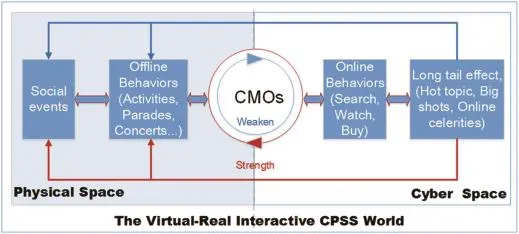
Fig.12.The virtual-real interaction between physical space and cyber space through CMOs.
Nowadays,the rapid spread of information via Internet has greatly condensed the time and space in the physical world, the“l(fā)ong-taileffect”becomes a new normal.Millions of users allover the world gather on one socialmedia platform in a few minutes,and converge huge attention,knowledge and energy on a tiny spot in the virtual cyber space that can make huge impacts on our real physical space.Fig.13 illustrated theinteraction between physical space and cyber space through CMOs.Besides,CMOs such as human fl esh search,crowd sourcing,etc.,invoked the enthusiasm of people to make full use of their fragmented spare time to participate in TBSes,and generated new forms of swarm intelligence.As Marvin Minsky stated in“The Society of Mind”,“What magical trick makes us intelligent?The trick is that there is no trick.The power of intelligence stems from our vast diversity,not from any single perfect principle”[56].Thus,the move from social computing to social intelligence will be achieved by analyzing and studying social behaviors through computational leverages,by creating artificial social agents to observe individual interactions in a micro view,and by exploring the dynamics of CMOs targeted on specific tasks,thus ultimately help us to realize Marvin Minsky's“The mind of Society”.
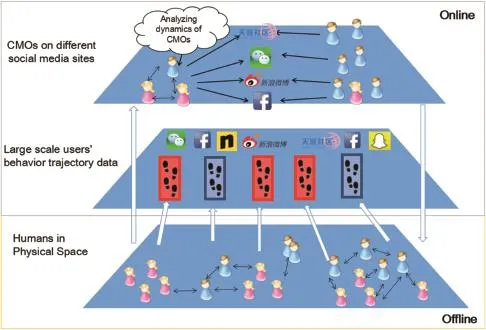
Fig.13.Human behavior transformation from offline to online and online to offline.
6.2.From parallel communities to society 5.0
An architecture of applying MAM for modeling social communities to construct a parallel community is illustrated here.In an artificial community constructed by MAM,the users are modeled as autonomous agents while the usergenerated-content are treated as VSRs.An agent actively interacted with other agents through operating on VSRs and meanwhile generated new VSRs.In turn,the update of VSRs promoted the interaction among agents.Thus,the interaction mode in online social communities is depicted in Fig.14. Using MAM based software-defined artificial communities, the mode of how collective behavioral patterns emerge from individual interaction mechanisms around VSRs is studies.It follows Fei-Yue Wang's studies[30,42-49]on artificial lives, communities,and societies.
Based on the above architecture,artificial population considering the attribute character,spatial character and temporal character of actual population data can be added. Furthermore,the collective behavioral patterns of crowds with different population distributions given specific social situations can be explored.Therefore,the MAM based artificial community can be used as a“computational social laboratory”to examine response of crowds to different advertising strategies,social management policies,etc.Afterwards,strategies or policies with the expected responses will be implemented in parallel in both the artificial and physical communities.It is noteworthy that,responses in the physical community do not necessarily consistent with the artificial community,thus,the artificial community uses real-time data generated by the physical community and implements new computations and decisions to driven system behaviors in the physical community converge to the artificial one.Thus to guarantee the real-time virtual-actual interaction and parallel execution in the systems.
Consequently,we believe that allkinds of complex societal systems can be modeled and studied through the parallel systems manner.Thus,we proposed that after tremendous advancement in mechanization,electrification,information and network technology,modern society has entered a new era of technology development,the parallel age of virtual-dual intelligence technology.Correspondingly,our society is moving from machine society(Societies 1.0),electric society (Societies 2.0),information society(Societies 3.0)and network society(Societies 4.0)into its fifth phrase of development:the parallel society or society 5.0,where parallel intelligence would be its defining characteristic,and the main UDC challenges are simplified utilizing the virtual artificial system,thus,the AFC(agile,focus and convergence)management and control of complex societal systems will be achieved as shown in Fig.15.
7.Toward smart societies
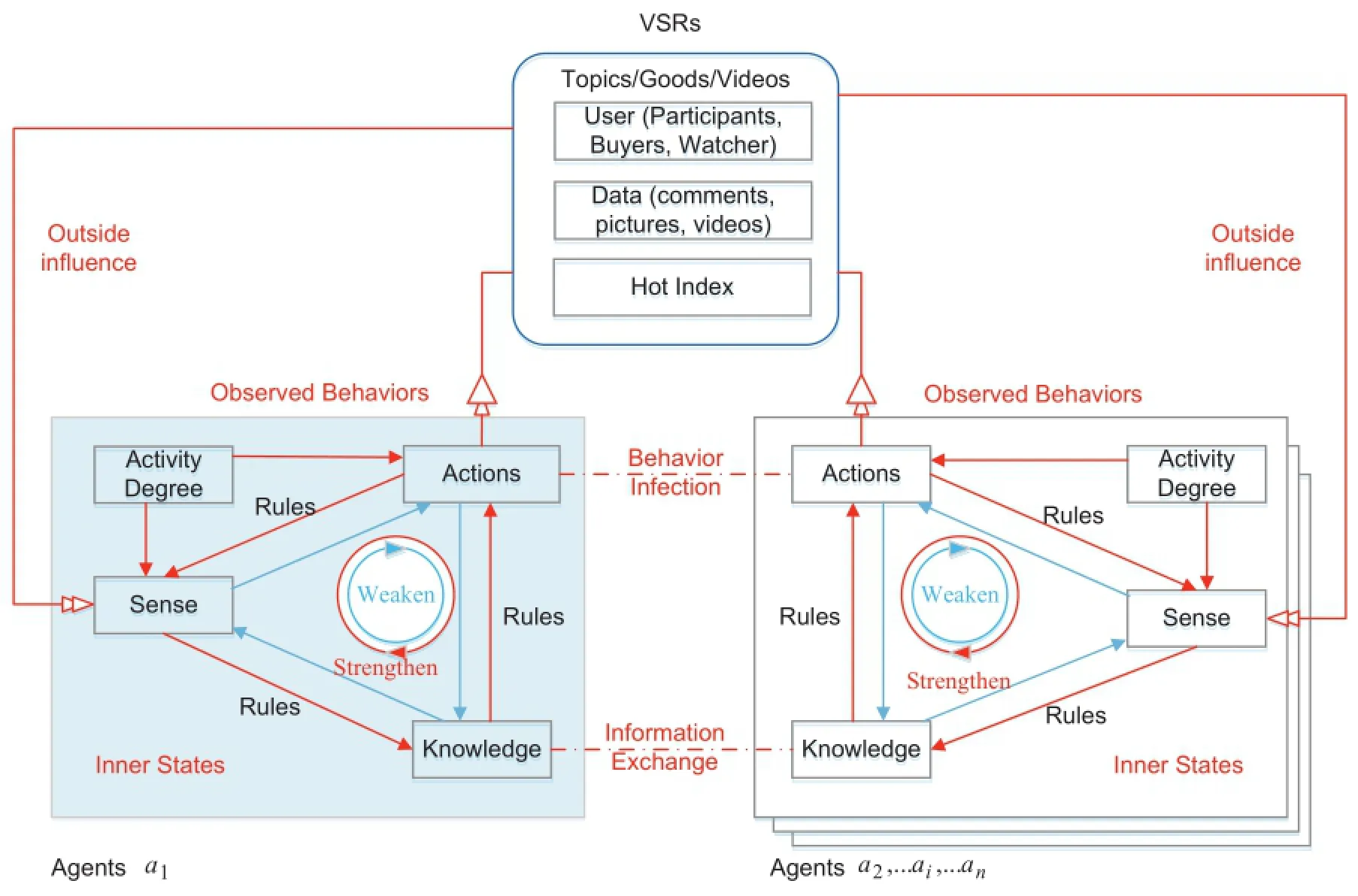
Fig.14.The MAM-based artificial community architecture with illustration of interaction between users in online social platforms.

Fig.16.Management modes of smart societies.
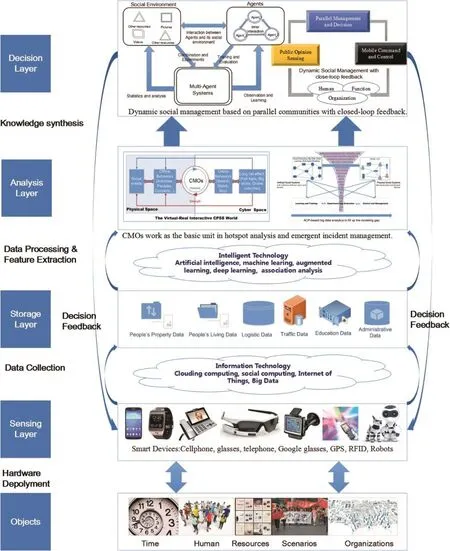
Fig.17.Configurable social management with closed-loop feedback.
To our minds,the management and control of smart societies uses massive data from social sensors as input to design software-defined everything,then with the help of highperformance computing devices,ACP-based social computing methods,and knowledge automation techniques,to drive the target system behaviors converge to the model system by dynamic closed-loop feedback,so as to realize the guidance, management,and control of the target system via virtualactual interact and parallel execution.
7.1.Management model and objectives of smart societies
The traditional societal management and control uses family as its fundamental unit,formed a single-body,one-way enforcement,and poor mode of social organization and management by constructing a top-down and bottom-up two-way interactive social management“chain”.Recent years,with the development of the historical process of Chinese urbanization, community gradually becomes the basic unit for city and society management.Facing with problems of urban heterogeneity,relationship complexity,residential mobility,and the increasing new challenges of residential needs,traditional ways of social management are far from sufficient.
The development of mobile devices and new ICTs enable the smart management and control for our society,which also provides society members with an interface to give feedback and describe social problems at any time any place,thus greatly stimulates the enthusiasm of people to manage public social affairs.It is beneficial to construct a social organization with shared information and equal rights,and realize a fair structure for national innovation,management,and guidance (as shown in Fig.16).This will also promote a direct interaction between civilians and the government,and facilitate a diversified,interactive,and service-oriented social condition.
7.2.The dynamic management and control of smart society with closed-loop feedback
The architecture for dynamic management and control for smart society with closed-loop feedback is shown in Fig.17. The societal fundamental elements include time,human,resources,scenarios,and organizations are considered.Firstly, through the comprehensive network of sensing,measuring, data acquiring,and broadcasting devices or systems,social events and related situation information(e.g.,traffic situations, weather conditions,social organizations,and civilian hotspots) can quickly be captured and analyzed,thus achieving real-time social signal acquisition,data fusion,and analysis;then,using ACP-based social computing method,along with technologies such as web data-mining,natural language processing,and machine learning,etc.,a set of integrated,systematic,and complete data can be obtained to solve specific social problems related to social activities,social processes,social architecture,social organizations,and social functions;Lastly, based on the virtual-real interaction and parallel execution between the physical world and the artificial world,feedback and guidance from the decisions made(more precisely, computed)by the“social laboratory”,and the capability to assess situations and solve problems in real-time,the entire society's operation mode will be completely changed and evolving toward Society 5.0 and beyond.
7.3.Conclusion and future prospects
The society-oriented,human-centered,and new IT based innovation 2.0+mode has attained great attention and shown its great potential values in recent years,thus creating a new form for the management of industry,government,cities,and societies(e.g.,industry 2.0,government 2.0,artificial intelligence 2.0,smart cities,and smart societies).From the perspective of smart society management,the“intelligent source”comes from the wide-spread user-end mobile devices;from the social computing that is based on technologies including IoEs,big data,and mobile internet;from access and usage of resources coming from CPSS,and from the innovative social management system that has characteristics such as virtual-real interaction, real-time feedback,and mobile visualization.
With the new ITs such as artificial intelligence,robotics, virtual-reality technologies,smart societies greatly facilitate the transformation of social management structure,i.e.,from the traditional way of centralization,unbalanced information, unequal interaction to the novel way of fair rights,fair information,and fair interfaces.The core problem is to overcome the big gap between actual behaviors and modeled behaviors, utilize Merton's Laws to predict and guide the future state of the society,and realize the fl exible,focused,and converged management of smart societies.We believe that,with the theoretical concepts such as software-defined systems, computational experiments,and closed-loop feedback between parallel virtual-real systems,and technologies such as Internet,IoT,cloud computing,knowledge automation,big data,etc.,ACP-based parallel intelligence will lead the way to achieve smart societies and beyond.
Acknowledgment
This work was supported by National Natural Science Foundation of China(61533019,71232006,61233001, 71402178,71472174).
[1]H.S.Tsien,Engineering Cybernetics,McGraw-Hill Book Company,Inc., New York,Toronto,London,1954.
[2]Andr′e-MarieAmp‵ere,Essai sur la philosophic des sciences,Paris,1845.
[3]China Internet Network Information Center,The 38th China Internet Network Development State Statistic Report,Beijing,2016,07,http:// news.xinhuanet.com/tech/2016-08/04/c_129203749.htm.
[4]https://www.statista.com/.
[5]Fei-Yue Wang,IEEE Intell.Syst.24(4)(July-Aug.2009)2-4.
[6]Fei-Yue Wang,Xiao Wang,LingxiLi,LiLi,IEEE/CAA J.Autom.Sin.3 (4)(2016)345-348.
[7]Fei-Yue Wang,IEEE Intell.Syst.25(4)(2010)85-88.
[8]Zhong Liu,Dong-sheng Yang,Ding Wen,Wei-ming Zhang,Wenji Mao, IEEE Intell.Syst.26(4)(2011)92-96.
[9]Fei-Yue Wang,IEEE Intell.Syst.27(5)(Sept-Oct.2012)2-4.
[10]Shuigen Hu,Lidong Shan,Jingrui Xu,J.Zhejiang Univ.Humanit.Soc. Sci.45(3)(2015)5-15.
[11]Xiao Si,People's Trib.(July,2014)49.
[12]Zhiguang Shan,Yufei Fang,Big Data Res.(2016)3-8,2016025.
[13]Fei-Yue Wang,J.Univ.Shanghai Sci.Technol.33(1)(2011)8-17.
[14]Fei-Yue Wang,Xiao Wang,Yong Yuan,etal.,Chin.Sci.Bull.60(2015) 460-469(in Chinese).
[15]Qingpeng Zhang,Daniel Dajun Zeng,Fei-Yue Wang,Ronald L.Breiger, James A.Hendler,IEEE Comput.49(6)(2016)56-64.
[16]Fei-Yue Wang,Daniel Zeng,James A.Hendler,Qingpeng Zhang, Zhuo Feng,Yanqing Gao,Hui Wang,Guanpi Lai,IEEE Comput.Soc.43 (8)(2010)45-53.
[17]Fei-Yue Wang,Daniel Zeng,Kathleen M.Carley,Wenji Mao,IEEE Intell.Syst.22(2)(2007)79-83.
[18]Fei-Yue Wang,IEEE Intell.Syst.22(5)(2007)65-67.
[19]Nan Xiao,Xuehe Wang,Lihua Xie,Tichakorn Wongpiromsarn, Emilio Frazzoli,Daniela Rus,IEEE/CAA J.Autom.Sin.1(1)(2014) 31-39.
[20]Chuanrui Wang,Xinghu Wang,Haibo Ji,IEEE/CAA J.Autom.Sin.1(2) (2014)187-192.
[21]Mohamed Nemiche,Vicent Cavero,Rafael Pla Lopez,Understanding social behavior evolutions through agent-based modeling,in:2012 International Conference on Multimedia Computing and Systems (ICMCS),Tangier,2012,pp.980-986.
[22]Fei-Yue Wang,IEEE/CAA Acta Autom.Sin.(Chinese Version)41(1) (2015)1-8.
[23]Ossama Younis and Nader,Cyber-physical systems:a framework for dynamic traffic light control at road intersections,in:IEEE Wireless Communications and Networking Conference(WCNC 2016),Gaithersburg,USA,2016,pp.1-6.
[24]Edward A.Lee,Cyber-Physical Systems-Are Computing Foundations Adequate?Oct.16-17,2006,pp.1-9.Austin,TX.
[25]Eric Ke Wang,Yunming Ye,Xiaofei Xu,S.M.Yiu,L.C.K.Hui, K.P.Chow,Security issues and challenges for cyber physicalsystem,in: 2010 IEEE/ACM International Conference on Green Computing and Communications&2010 IEEE/ACMInternational Conference on Cyber, Physical and Social Computing,2016,pp.733-738.
[26]Fei-Yue Wang,IEEE/CAA J.Autom.Sin.3(3)(2016)233-234.VoAmit Sheth,Pramod Anantharam,and Cory Hensonl.
[27]Thomas Rid,Rise of the Machines,first ed.,W.W.Norton&Company, London,June 28,2016.
[28]Fei-Yue Wang,Jun Jason Zhang,Xinhu Zheng,Xiao Wang,Yong Yuan, Xiaoxiao Dai,Jie Zhang,Liuqing Yang,IEEE/CAA J.Autom.Sin.3(2) (2016)113-120.
[29]Fei-Yue Wang,Control Decis.19(5)(2014)485-489.
[30]Fei-Yue Wang,Complex Syst.Complex.Sci.1(4)(2004)25-35.
[31]Fei-Yue Wang,Jian Yang,Shuangshuang Han,Liuqing Yang, Xiang Cheng,J.Command Control 2(1)(2016)71-77.
[32]Fei-Yue Wang,Xiaogang Qiu,Dajun Zeng,Zhidong Cao,Zongchen Fan, Complex Syst.Complex.Sci.7(4)(2010)1-10.
[33]EricJ.Tuege,Anthony R.Ingraffea,Thomas G.Eason,S.Michael Spottswood,Hindawi Publ.Corp.Int.J.Aerosp.Eng.2011(2011) 1-14.
[34]E.H.Glaessgen,D.S.Stargel,The digitaltwin paradigm for future NASA and U.S.Air force vehicles,in:53rd AIAA/ASME/ASCE/AHS/ASC Structures,Structural Dynamics and Materials Conference,Honolulu, Hawall,April 23-26,2012,pp.1-14.
[35]Thomas Gabor,Lenz Belzner,Marie Kiermeier,Michael Till Beck, Alexander Neitz,A simulation-based architecture for smart cyberphysical systems,in:2016 IEEE International Conference on Autonomic Computing(ICAC)(2016),Wuerzburg,Germany,July17-22, 2016,pp.374-379.
[36]Wang Fei-Yue,Pattern Recognit,Artif.Intell 17(1)(2004)1-6.
[37]Fei-Yue Wang,Xiaochen Li,Wenji Mao,Tao Wang,Social Computing: Methods and Applications,Zhejiang University Press,Hangzhou,2012.
[38]Qingpeng Zhang,Fei-Yue Wang,Daniel Zeng,Tao Wang,PLoS One 7 (6)(June 2012)1-16.
[39]Tom A.B.Snijders,Gerhard G.van de Bunt,Christian E.G.Steglich,Soc. Netw.32(1)(2010)44-60.ZHAO Zhi-dan,ZHOU Tao.Empirical analysis of online human dynamics.Physica A,2012,391(11):3308-3315.
[40]Robert M.Bond,Christopher J.Fariss,Jason J.Jones,AdamD. I.Kramer,Cameron Marlow,Jaime E.Settle,James H.Fowler,Nature 13 (489)(2012)295-298.
[41]C.Danescu-niculescu-mizil,R.West,Jurafsky,et al.,No country for old members:user lifecycle and linguistic change in online communities,in:Proceedings of the 22nd International Conference on World Wide Web,2013.
[42]Fei-Yue Wang,Shuming Tang,A framework for artificial transportation systems:from computer simulations to computational experiments,in: Proceedings of 2005 IEEE International Conference on Intelligent Transportation Systems(ITSC’05),Vienna,Austria,2005,pp. 1130-1134.
[43]Robert K.Merton,Am.Sociol.Rev.1(6)(December 1936)894-904.
[44]Fei-Yue Wang,Complex Syst.Complex.Sci.3(2)(2006)26-34.
[45]D.Silver,A.Huang,C.J.Maddison,et al.,Nature 529(7587)(2016) 484-489.
[46]P.T.de Chardin,The Phenomenon of Man,William Collins Sons,London,1955.
[47]Fei-Yue Wang,Commun.China Comput.Fed.11(5)(2015)10-14.
[48]Paul M.Konnersman,Decision process specification:a process for defining professional and managerial work processes,in:Portland International Conference on Management of Engineering and Technology, July,1997.
[49]Xiao Wang,Analysis of Cyber Movement Organizations Using Artificial Communities and Computational Experiments,Ph.Dissertation,2016.
[50]Mayer N.Zald,Roberta Ash,Soc.Forces 44(3)(Mar.,1966)327-341.
[51]Dingxin Zhao,Social and Political Movements,Social Sciences Academic Press(China),Beijing,2006.
[52]Garreitt R.Kelly,Inf.Commun.Soc.2(2006)202-224.
[53]Christopher Mele,Cyberspace and disadvantaged community:the internet as a tool for collective action,in:Mare A.Smith,Peter Kollock (Eds.),Communities in Cyberspace,Routledge,London,2009,pp. 290-310.
[54]John D.Clak,S.Themudo Nuno,World Dev.34(l)(2006)50-74.
[55]Jennifer Earl,Kimport Katrina,Sociol.Theory 27(3)(2009)220-243.
[56]M.Minsky,Proc.IRE 49(1)(1961)8-30.
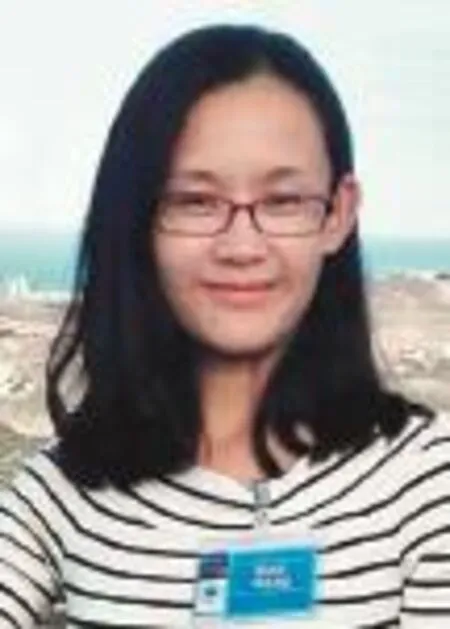
Xiao Wangreceived her Bachelor's degree in network engineering from Dalian University of Technology,in 2011,and the Ph.D.degree in Social Computing from CASIA in 2016.She is currently a research assistantin CASIA with SKL-MCCS.Her research interests are artificial intelligence,social transportation,cyber movement organizations,and social network analysis.

Lingxi Lireceived the B.E.degree in Automation from Tsinghua University,Beijing,China,in 2000,the M.S.degree in Control Theory and Control Engineering from the Institute of Automation,Chinese Academy of Sciences,Beijing,China,in 2003,and the Ph.D.degree in Electrical and Computer Engineering from the University of Illinois at Urbana-Champaign, in 2008.Since August 2008,he has been with Indiana University-Purdue University Indianapolis(IUPUI) where he is currently an Associate Professor in Electrical and Computer Engineering.Dr.Li's current research focuses on modeling,analysis,and control of complex systems; fault-tolerant systems;discrete-event systems;intelligent transportation systems;intelligent vehicles;active safety systems;and human factors.Dr.Li received Remarkable Paper Award at ACMICUIMC in 2011,Indiana University Trustees Teaching Award in 2012,Outstanding Editorial Service Award for IEEE Transactions on Intelligent Transportation Systems in 2012,andIUPUI Prestigious External Awards Recognition(PEAR)in 2013.Dr.Li has served as Program Chair of 2011 and 2013 IEEE International Conference on Vehicular Electronics and Safety(ICVES 2011,ICVES 2013),Program Co-Chair of 2010 IEEE International Conference on Vehicular Electronics and Safety(ICVES 2010),and has been serving as an Associate Editor for IEEE Transactions on Intelligent Transportation Systems since 2009.Dr.Li is a Senior Member of the IEEE.

Yong Yuanreceived the B.S.,M.S.,and Ph.D.degrees in computer software and theory from the Shandong University of Science and Technology,Shandong, China,in 2001,2004,and 2008,respectively.He is an Associate Professor with the State Key Laboratory of Management and Control for Complex Systems, Institute of Automation,Chinese Academy of Sciences,Beijing,China,and also with the Qingdao Academy of Intelligent Industries,Qingdao,China. His current research interests include social computing and business intelligence.

Peijun Yeis currently an assistant researcher with the National Key Laboratory for Management and Control of Complex Systems,Institute of Automation,Chinese Academy of Sciences,and a technical engineer with Qingdao Academy of Intelligent Industries.He received his Ph.D.in 2013 from University of Chinese Academy of Sciences.His research interests mainly focus on agent based modeling,social computing, travel behavior analysis and simulation,distributed computing.Dr.Ye has authored or co-authored overten papers,four invention patents,four software copyrights,and one translation publication.He serves as an Associate Editor of IEEE Transactions on Intelligent Transportation Systems and the Secretary of the Social and Economic Computing ACM Chapter.He is also an Invited Reviewer of Journal of Artificial Societies and Social Simulation,Science China,and IEEE/CAA Journal of Automatica Sinica.

Fei-Yue Wangreceived his Ph.D.in Computer and Systems Engineering from Rensselaer Polytechnic Institute,Troy,New York in 1990.He joined the University of Arizona in 1990 and became a Professor and Director of the Robotics and Automation Lab (RAL)and Program in Advanced Research for Complex Systems(PARCS).In 1999,he founded the Intelligent Control and Systems Engineering Center at the Institute of Automation,Chinese Academy of Sciences(CAS),Beijing,China,under the support of the Outstanding Oversea Chinese Talents Program from the State Planning Council and“100 Talent Program”from CAS,and in 2002,was appointed as the Director of the Key Lab of Complex Systems and Intelligence Science,CAS.In 2011,he became the State Specially Appointed Expert and the Director of the State Key Laboratory of Management and Control for Complex Systems.Dr.Wang's current research focuses on methods and applications for parallel systems,social computing,and knowledge automation.He was the Founding Editor-in-Chief of theInternational Journal of Intelligent Control and Systemsfrom 1995 to 2000,and the EiC ofIEEE Intelligent Systemsfrom 2009 to 2012.Currently,he is the EiC ofIEEE Transactions on Intelligent Transportation Systems.Since 1997,he has served as General or Program Chair of more than 20 IEEE,INFORMS,ACM,ASME conferences.He was the President of IEEE ITS Society from 2005 to 2007, Chinese Association for Science and Technology(CAST,USA)in 2005,and the American Zhu Kezhen Education Foundation from 2007 to 2008.Since 2008,he is the Vice President and Secretary General of Chinese Association of Automation.Dr.Wang is elected Fellow of IEEE,INCOSE,IFAC,ASME,and AAAS.In 2007,he received the 2nd Class National Prize in Natural Sciences of China and awarded the Outstanding Scientist by ACM for his work in intelligent control and social computing.He received IEEE ITS Outstanding Application and Research Awards in 2009 and 2011,respectively.In 2014,Dr. Wang received the IEEE SMC Society Norbert Wiener Award.
Available online 15 November 2016
*Corresponding author.The State Key Laboratory for Management and Controlfor Complex Systems,Institute of Automation,Chinese Academy of Sciences, Beijing 100190,China.
E-mail address:feiyue.wang@ia.ac.cn(F.-Y.Wang).
Peer review under responsibility of Chongqing University of Technology.
http://dx.doi.org/10.1016/j.trit.2016.11.005
2468-2322/Copyright?2016,Chongqing University of Technology.Production and hosting by Elsevier B.V.This is an open access article under the CC BY-NC-ND license(http://creativecommons.org/licenses/by-nc-nd/4.0/).
Copyright?2016,Chongqing University of Technology.Production and hosting by Elsevier B.V.This is an open access article under the CC BY-NC-ND license(http://creativecommons.org/licenses/by-nc-nd/4.0/).
 CAAI Transactions on Intelligence Technology2016年4期
CAAI Transactions on Intelligence Technology2016年4期
- CAAI Transactions on Intelligence Technology的其它文章
- A review on Gaussian Process Latent Variable Models
- Research progress of artificial psychology and artificial emotion in China
- Evolutionary computation in China:A literature survey
- A survey on rough set theory and its applications
- Building a click model:From idea to practice
- Recent Advances on Human-Computer Dialogue
